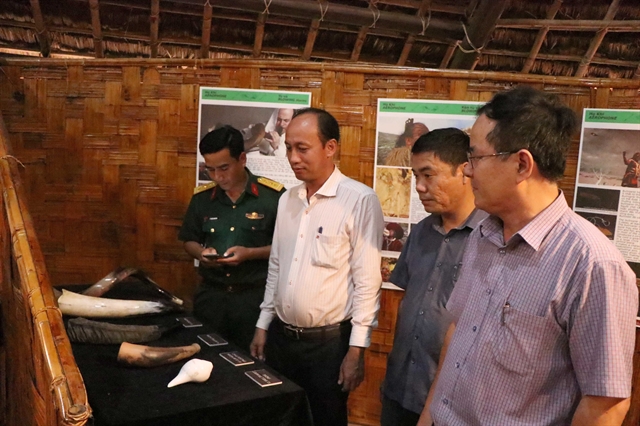 Life & Style
Life & Style

An exhibition house of sounds displaying traditional musical instruments of Tây Nguyên (Central Highlands) region has opened in Đắk Nông Province’s Gia Nghĩa town.

|
| Visitors at a display room, featuring musical instruments of ethnic minority groups at the Explora Sound Dak Nong Geopark. VNA/VNS Photo by Ngọc Minh |
ĐÁK NÔNG — Đắk Nông An exhibition house of sounds displaying traditional musical instruments of Tây Nguyên (Central Highlands) region has opened in Đắk Nông Province’s Gia Nghĩa Town.
The 200 sq.m house, called Explora Sound Dak Nong Geopark, was initiated by Dr. Guy Marini of the United Nations Education, Scientific and Cultural Organisation (UNESCO). It was built by a group of French artists.
The house has eight rooms featuring musical instruments of ethnic minority groups such as Đinh Năm M’s Buốt, Đinh tac Tar and the R’let.
The rooms use light and sound effects to highlight their different themes of stone, wind, wood, fire, light and people.
Tây Nguyên’s stone instruments and cồng-chiêng (gongs) in various shapes and sizes are also featured.
Tây Nguyên people call the stone instruments “goong lu”, which means "rock gongs". The instruments are made of stone slabs of different sizes. The long, thick slabs sound bass notes, while the short, small, thin ones sound the higher notes.
Cồng instruments have a nipple and produce a single, uniform sound, while chiêng are flat and offer a wider range of notes. Different sizes of gongs are characterised by family names: Mother, Father, and Older Sister.
Cồng-chiêng can be drummed by hand or with a cloth-covered stick.
The instruments appear in most of the rituals and ceremonies of ethnic minorities in Tây Nguyên. They are not only musical but also serve a cultural function for about 20 ethnic minorities.
In 2005, the gongs were recognised as a Masterpiece of Oral and Intangible Heritage of Humanity by UNESCO.
Explora Sound Dak Nong Geopark is a tourist site in Đắk Nông Geopark, which opened in 2015 and covers an area of 2,000sq.km in the five districts of Krông Nô, Cư Jút, Đắk Mil and Đắk Song and Gia Nghĩa Town.
The park includes a volcanic cavern system located along the Krông Nô River, which was home to ancient tribes about 6,000 to 7,000 years ago. It also has geomorphologic heritage such as ponds and waterfalls. — VNS

.jpg)


